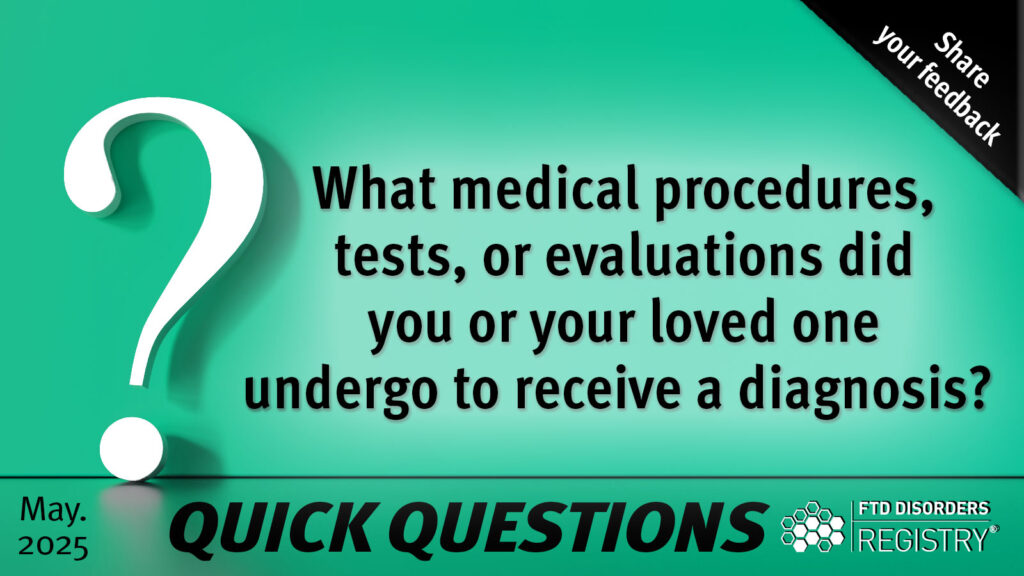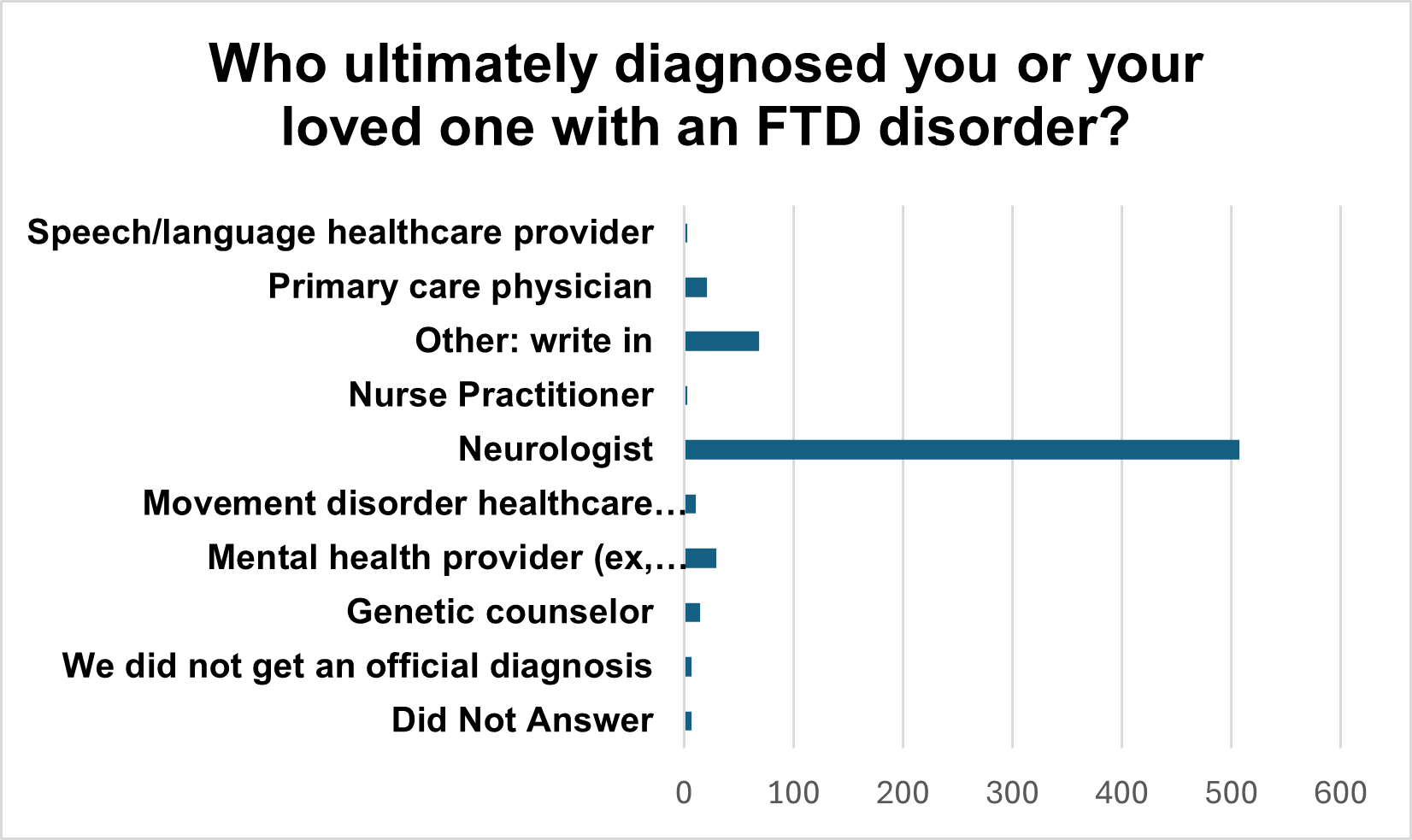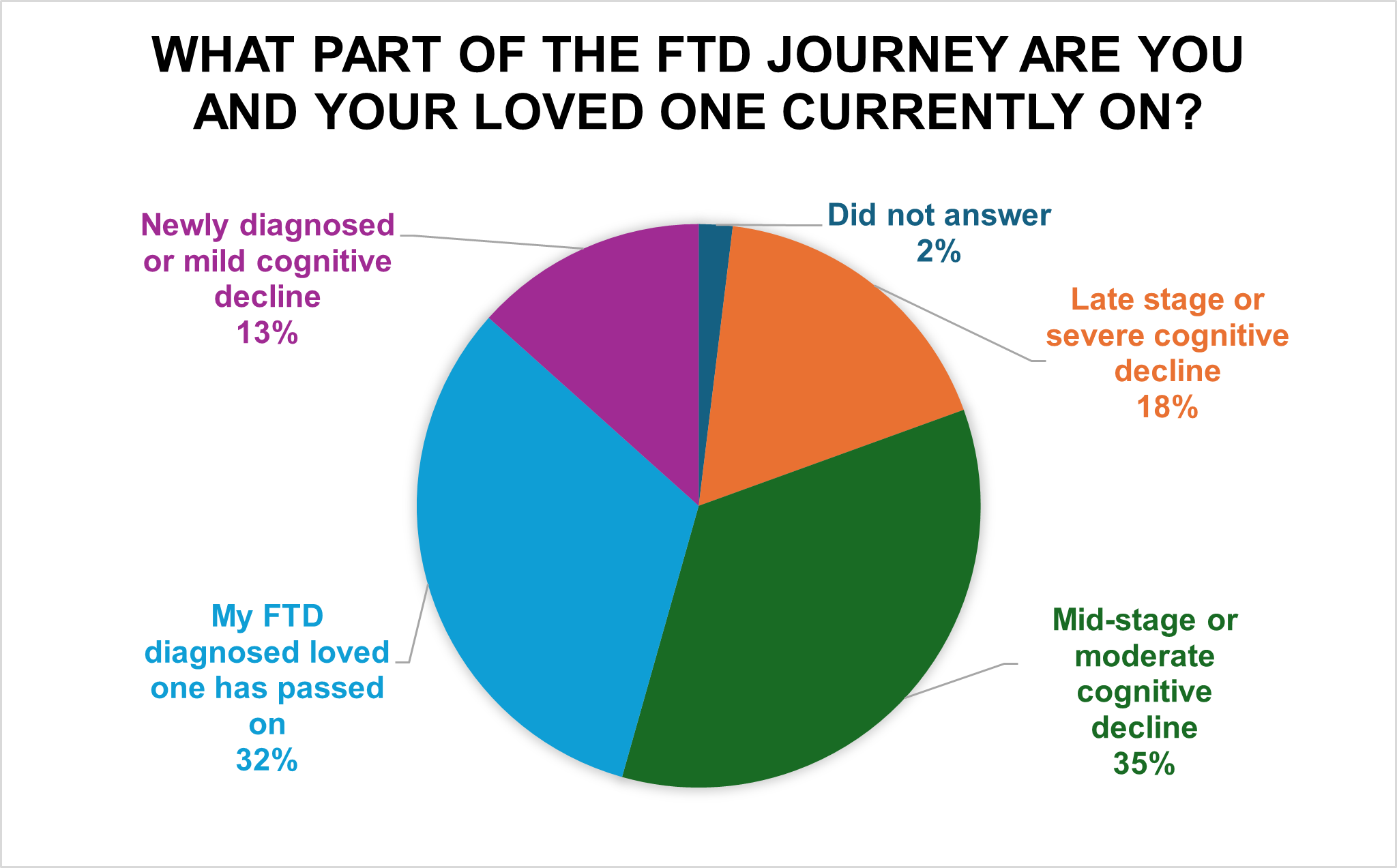PRESS & NEWS
Quick Question May 2025 Result:

673 participants responded to the FTD Disorders Registry’s May Quick Question on their diagnosis journey.
What medical procedures, tests, or evaluations did you or your loved one undergo to receive a diagnosis?
673 participants responded to the FTD Disorders Registry’s May Quick Question on their diagnosis journey.
Receiving a diagnosis for an FTD disorder is often a long, confusing, and emotional process. No two journeys are exactly the same. In May, the FTD Disorders Registry’s Quick Question asked: What medical procedures, tests, or evaluations did you or your loved one undergo to receive a diagnosis? A total of 673 participants responded, offering a powerful snapshot of the diverse and often complex diagnostic paths taken by those affected by an FTD disorder. Here’s what we learned.

The survey responses reveal that most individuals underwent a wide range of procedures and evaluations to receive an FTD disorder diagnosis, often involving multiple specialties and diagnostic tools. The most common evaluations included a neurological examination (78.45%) and a brain MRI (70.72%), followed closely by a neuropsychological evaluation (60.47%) and consultation with a memory or dementia specialist (44.87%). PET scans (42.79%), blood tests (37.44%), and CT scans (33.28%) were also frequently reported. About one-third of respondents underwent genetic testing (33.28%), and one-quarter had a spinal tap (25.7%). Evaluations by speech-language pathologists (21.99%) and psychiatrists (22.73%) were also part of the diagnostic journey for many. A small percentage selected “Other” (6.6%) or were unsure which procedures had been done (2.97%), highlighting the complexity and variability of the diagnostic process.

When asked who ultimately provided the diagnosis, the overwhelming majority of respondents reported that a neurologist made the diagnosis (507 respondents). This highlights the central role neurologists play in identifying FTD disorders. A smaller number were diagnosed by mental health providers (30), genetic counselors (15), or movement disorder specialists (11). Primary care physicians accounted for 21 diagnoses, while nurse practitioners and speech/language healthcare providers were each cited by just three respondents. Sixty-nine participants selected “Other” and provided write-in responses, pointing to a broader range of diagnostic experience.. Notably, 7 respondents said they never received an official diagnosis, and 7 respondents chose to not answer the question.
Demographics
Of the respondents, the majority were spouses answering on behalf of a person diagnosed with an FTD disorder (40.2%), followed by biological family members answering on behalf of a person diagnosed with an FTD disorder (19.8%) and individuals diagnosed with an FTD disorder answering for themselves (17.7%).

We received input on this Quick Question from all stages of the FTD journey. The largest group were those in the middle stages of FTD (35%), but we also received input from those whose FTD-diagnosed loved one had already passed away (32%), those in the late-stage of FTD (18%), and those newly diagnosed (13%).
The majority of respondents to this Quick Question were female (67%). 31% were male. Fourteen people did not identify their gender. Answers came from around world with respondents reporting in from 20 countries and 45 states.
Together we can find a cure for ftd
The FTD Disorders Registry is a powerful tool in the movement to create therapies and find a cure. Together we can help change the course of the disease and put an end to FTD.
Your privacy is important! We promise to protect it. We will not share your contact information.



